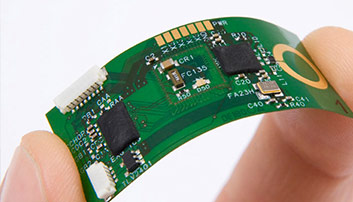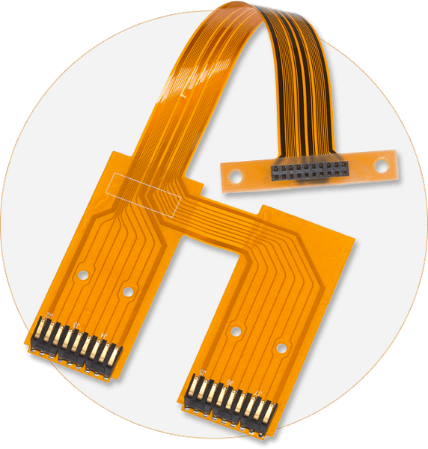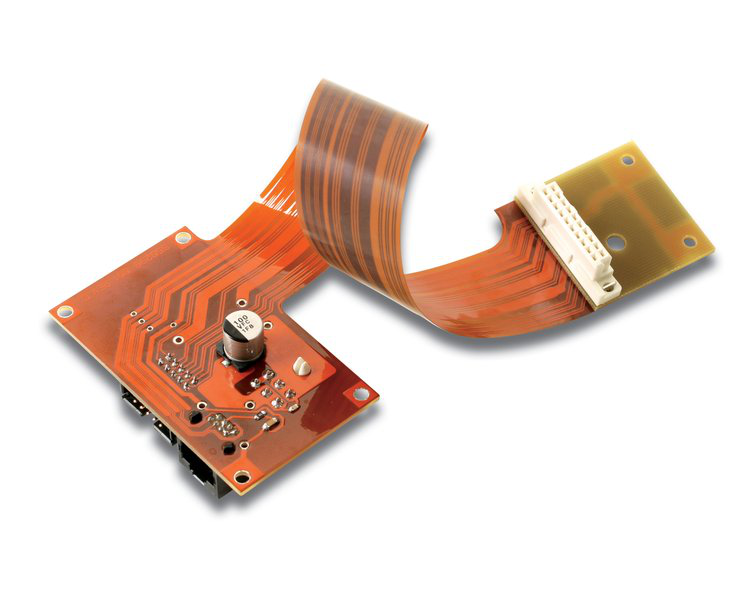Flex PCB Prototype-How To Make It
by Howie Liu Electronics EngineerABSTRACT
Flex pcb prototype are also referred to as flex circuits are made up of a thin polymer film that is used for insulation. It also has conductive circuit patterns that are fixed to it. There are different types of flexible circuits like the double-sided, metal layer and the rigid flex circuits that are made up of circuit boards both in their internal and external.

Content
1.Basic steps of making Flex PCB Prototype at home
2.Advantages of Flex PCB Prototype
3.Conclusion

1.Basic steps of making Flex PCB Prototype at home
One can make a single-sided flexible circuit that is printed by the use of a polyimide film that is copper coated, solid ink printer and the etching chemicals for a common circuit board. Flex PCBs are mostly found in the cell phones or gadgets of that kind. These flex cables are used for making the tiny cables and the very lightweight circuits. One should follow the following steps in making these flexible circuit boards:
1.Make use of copper coated film. Get the thin polyimide sheets that are made up of copper on their both sides. A polyimide is a polymer characterized by yellow colour and a high melting point.
2.Use a solid ink printer. When printing directly to the copper film, find a solid ink printer that is mostly confused with the laser printers that print wax that is melted. The wax is meant to make a protective layer that is good for copper etching. The printers from solid ink do not rely on charging the surface of the paper locally like the laser printers that could cause trouble in the case when copper sheet replaces the paper. In this step, one can replace with the iron on method toner transfer while using the design of a laser printer instead of a solid ink printer.
3.Print on Pyralux. Draw a design in a graphics program and use feed tray that is manual to print on your sheet of pyralux in black. Avoid the shades that are light which is made up of tiny dots on the white background. The areas that are printed are protected by wax. When printing use ‘photo' or ‘high resolution.'
4.Etch it. Place the sheet that is printed in ferric chloride for around five minutes. The time for etching will depend on the levels of temperatures and the thickness of copper. Wait for the areas made of copper to dissolve and the film of polyimide to show up.
5.Populate the board. At this point, the flexible PCB is ready to be cut into small circuits and solder. It can be taped on metal or a circuit board made of fiberglass in order to hold it steady while working on it.
2.Advantages of Flex PCB Prototype
♦ Flexibility. Their flexible nature makes them suitable for the electronic devices that need three axes connections and very little wiring is required.
♦ Saves on weight and space. Flex PCB’s save the space and weight up to 60% as compared to wire applications.
♦ Anti-vibration advantages. Due to their light nature and flexibility, the circuits can absorb and reduce the vibration impact.
You can also check this video:
https://www.youtube.com/watch?v=j3vBrYjtvmY

3.Conclusion
In conclusion, the flex pcb prototype are an integral part of our day to day lives due to their diverse sizes, shapes, and functionalities. If you want to get high-quality flex PCB within a short time frame you can contact with WellPCB. They are renowned manufacturer from China who also offer customization of the products.
Sponsor Ads
Created on Apr 19th 2018 01:51. Viewed 269 times.



